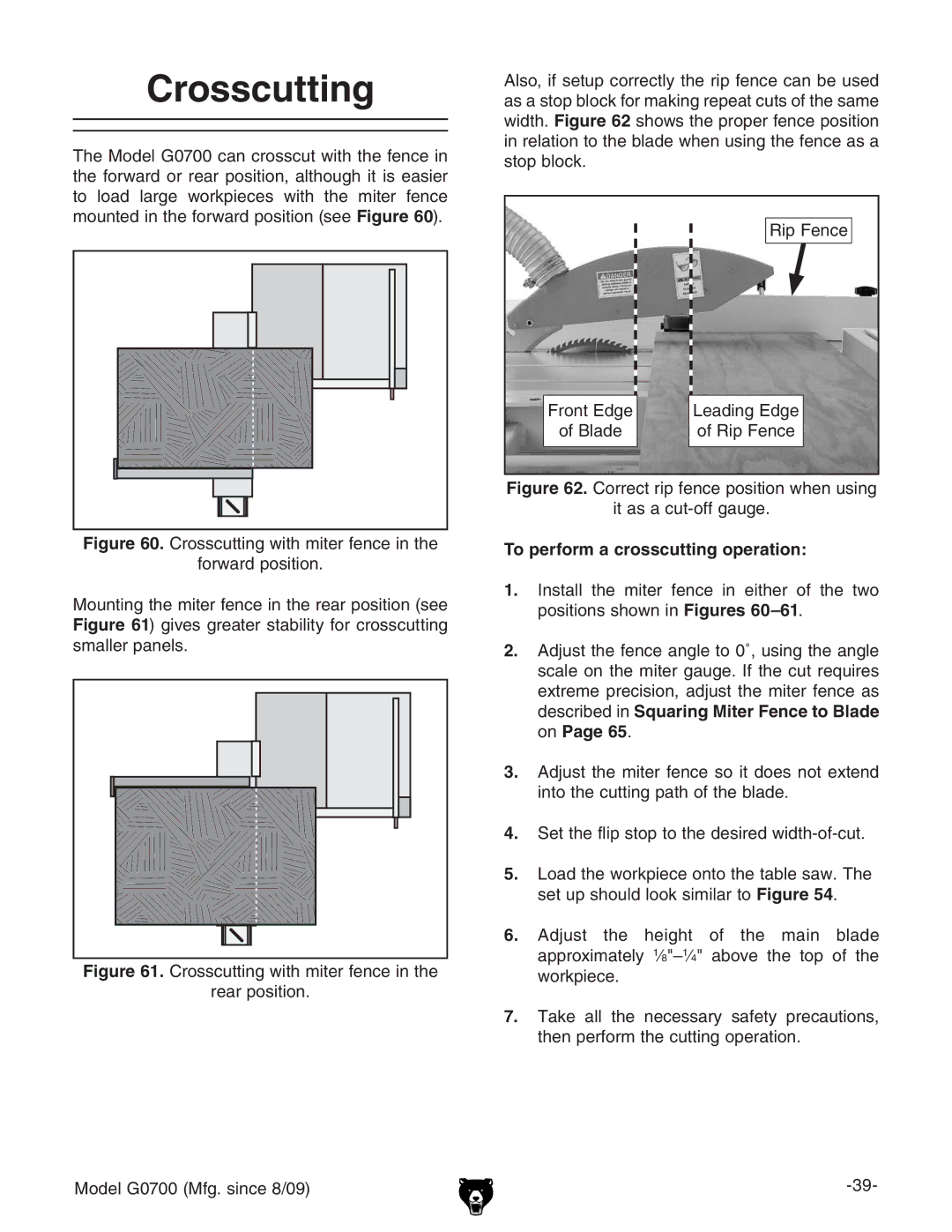
Crosscutting
The Model G0700 can crosscut with the fence in the forward or rear position, although it is easier to load large workpieces with the miter fence mounted in the forward position (see Figure 60).
Figure 60. Crosscutting with miter fence in the
forward position.
Mounting the miter fence in the rear position (see Figure 61) gives greater stability for crosscutting smaller panels.
Figure 61. Crosscutting with miter fence in the
rear position.
Model G0700 (Mfg. since 8/09)
Also, if setup correctly the rip fence can be used as a stop block for making repeat cuts of the same width. Figure 62 shows the proper fence position in relation to the blade when using the fence as a stop block.
Rip Fence
Front Edge |
| Leading Edge |
of Blade |
| of Rip Fence |
|
|
|
Figure 62. Correct rip fence position when using
it as a cut-off gauge.
To perform a crosscutting operation:
1.Install the miter fence in either of the two positions shown in Figures
2.Adjust the fence angle to 0˚, using the angle scale on the miter gauge. If the cut requires extreme precision, adjust the miter fence as described in Squaring Miter Fence to Blade on Page 65.
3.Adjust the miter fence so it does not extend into the cutting path of the blade.
4.Set the flip stop to the desired
5.Load the workpiece onto the table saw. The set up should look similar to Figure 54.
6.Adjust the height of the main blade approximately
7.Take all the necessary safety precautions, then perform the cutting operation.
